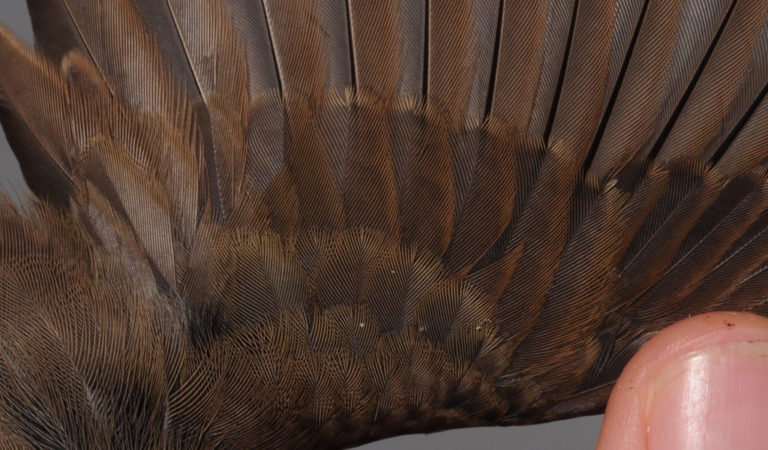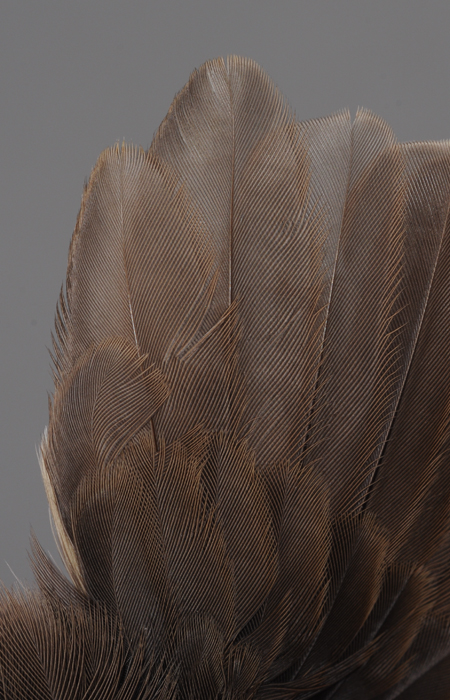

Thrush Nightingale
AGE – BEST CRITERIA:
In 1cy, moult contrast is present in GC, most often in the central part of the arm. Adult birds show a uniform and freshly moulted plumage.
1cy:
2cy+:

1cy July. GC1-5 are juvenile with a rusty hue and rather large pale buffish tip. Inner post-juvenile inner GC6-10 have a slightly more dense structure and lack pale tips. In this individual the post-juvenile GC are almost as rusty as the juvenile outer ones, but in most birds the newly aquired GC are slightly less rusty, and more cold olive brown. [2KR44293]

1cy August. Most young birds show uniformly juvenile TT, but a few (like here) may show two generations of feathers. Note the post-juvenile innermost T, same generation as inner GC, but showing a contrast to the two longer juvenile TT (slightly less dense and a trifle more rusty, less olive). [2KR44343]
More Luscinia luscinia:
Ringers’ DigiGuide is sponsored by: